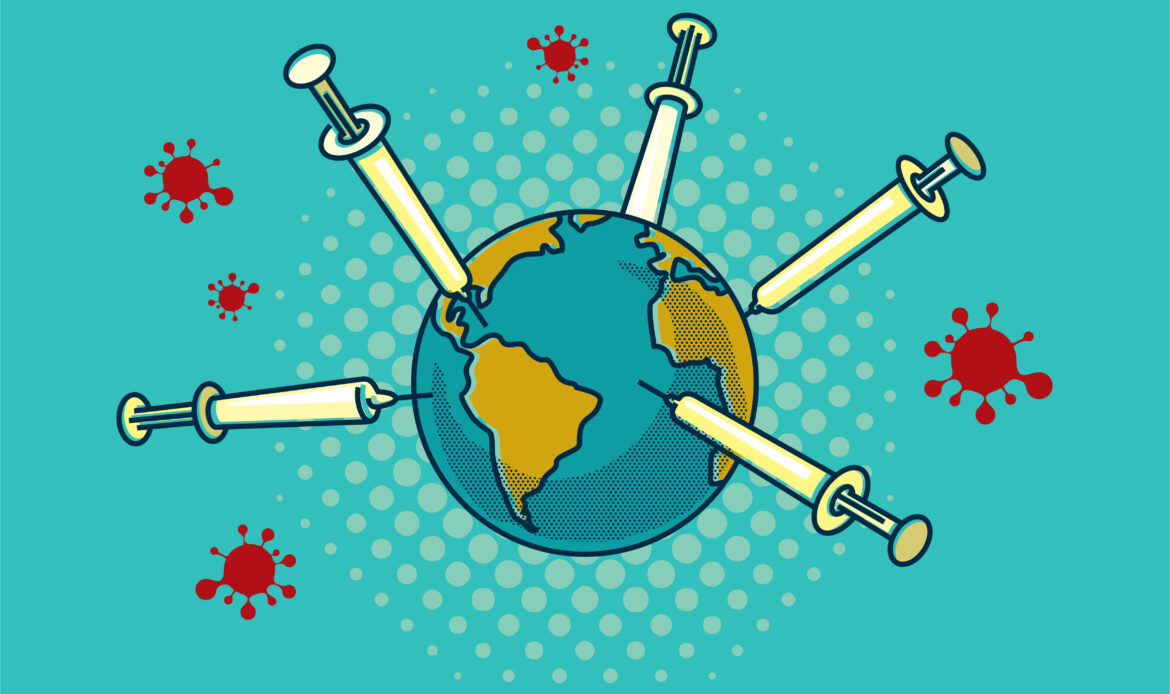
Who will pay for all this? In fact, who’s paid for all the COVID-19 fighting to date? As I’m sure you’ve noticed, vaccines are 100% free. But nothing’s really free, right?
The simple answer is that mostly we pay, or rather, the government does through our tax dollars, (though insurance companies and hospitals have also been assuming some costs). Following that money as it wends its way through the system is far less simple though, and it also raises the question of who owns the rights to the vaccines and what’s a fair rate of return for a product that was funded to a large degree by public dollars. Then there’s the matter of what the obligations these companies have when it comes to providing vaccines not only to U.S. citizens but to the rest of the world.
Note that the fight against COVID-19 also entails tests and medicine, but I’m just going to focus on vaccines, as it’s a critical and deep topic that also happens to be rich with drama.
First you should know that the U.S. government has been in the business of funding vaccines long before COVID-19. Yes there have been ups and downs here, and if you ask scientists there’s never enough money, but no one can deny its significance.
“We’ve had a large public health infrastructure that does vaccination forever and ever,” says Sherry A. Glied, an economist and the dean of the Robert F. Wagner Graduate School of Public Service at New York University. “A lot of vaccines are provided for free by public health departments and a lot of vaccines are provided with no out-of-pocket cost because insurers are required to cover them. For the most transmissible, communicable diseases that are vaccine preventable, people should be able to get them at no cost either through public health or by insurance. It’s true of most childhood vaccines as well. Even the flu vaccine — most people are getting it for free one way or another. The COVID vaccine falls into that bucket.”
Vaccine funding takes several forms. For instance, there’s BARDA (Biomedical Advanced Research and Development Authority), an office of the U.S. Department of Health and Human Services, which “works with the biomedical industry, using grants and other assistance, to promote advanced research, innovation and the development of medical devices, tests, vaccines and therapeutics.”
BARDA has given U.S. medical companies billions of dollars for vaccine research (such as for a HIV vaccine) well before COVID, including hundreds of millions to help create “the mRNA platform … to produce vaccines in response to the threat of pandemic flu,” according to this Health Affairs Blog.
Once COVID-19 hit however, government spending went into overdrive. This BARDA website maps out the vast sums the government has put out to fight the pandemic. Focus on just the vaccine efforts page and you can see that billions went to seven companies; Pfizer, Moderna, Janssen (part of Johnson & Johnson), Sanofi, AstraZeneca, Novavax and Merck — the latter of which is “no longer supported,” after Merck failed to produce a vaccine.
(Sidebar here: Merck has been focusing instead on a therapeutic oral medicine (aka pill) that won preliminary approval this week and could be available as early as next month. There have been questions however about the efficacy and safety of the pill. “In the coming weeks, the FDA may also authorize a similar pill from Pfizer that appears to be significantly more effective than Merck’s,” according to The New York Times.)
The Congressional Budget Office has calculated that BARDA alone has spent over $19 billion on vaccines, (there are other agencies like the Defense Department that have provided funding too, see below), at least half of that spend was buying vaccines for the American public from Pfizer, Moderna and J&J (from biggest to smallest). Overall, Moderna has received some $9 billion from the government while Pfizer has received over $10 billion from the government, but with important differences.
Unlike Moderna, Pfizer took no money from the government to develop the vaccine, as “Pfizer’s chief executive, Albert Bourla, said he didn’t want any government interference,” according to the Boston Globe.
The Globe story also notes that “in exchange for assuming the risk of developing the vaccine, Pfizer charged the government more for each dose in its initial contract, about $19.50, compared with $15 a dose on average charged by Moderna. Moderna’s vaccine also has had a far bigger impact on the biotech [company] than Pfizer’s vaccine has had on the pharmaceutical giant. Moderna, an 11-year-old company, had never gotten a product to market before the FDA cleared the vaccine. In contrast, the 172-year-old Pfizer is one of the world’s biggest drugmakers, with dozens of products on the market.”
Got that right, and the proof is in the stock chart. Since March 1, 2020, Pfizer is up a tidy 70%, but that pales compared to Moderna (MRNA), which is up over 1100%. Moderna CEO Bancel’s 7.9% stake in the company is now worth $11.2 billion. Whoa.

